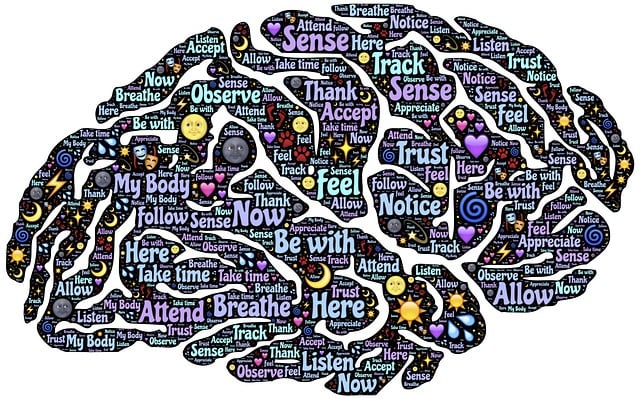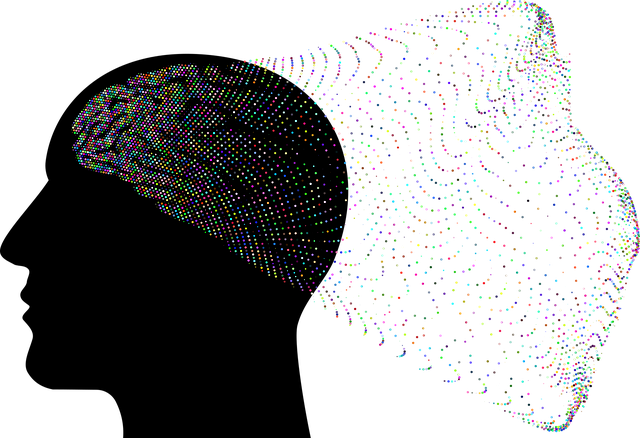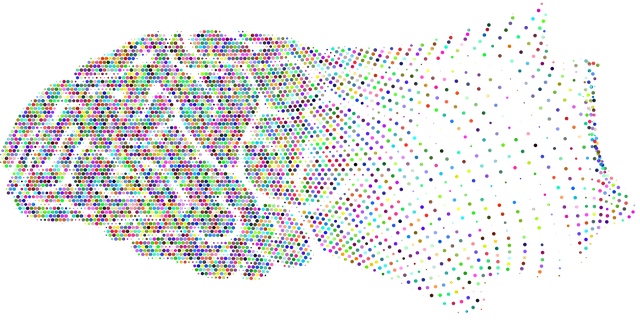Understanding mental health data involves diverse sources from structured clinical evaluations to unstructured online data, highlighting emerging trends like stress management challenges. Preprocessing is crucial, including missing value imputation using machine learning and data normalization for consistent comparisons. Advanced statistical and qualitative methods aid in identifying patterns guiding tailored therapy recommendations during Independent Medical Evaluations (IMEs). Interpreting this data holistically, incorporating practices like compassion cultivation and burnout prevention, enhances IME effectiveness. Challenges include patient privacy and integrating varied assessment tools, which advanced analytics can help overcome, improving IMEs and mental wellness resources.
Mental health data analysis has emerged as a powerful tool for understanding and improving patient outcomes. This article delves into the intricacies of analyzing and interpreting mental health data, covering key aspects from collection and preprocessing to advanced techniques and their implications for independent medical evaluations (IMEs). By exploring common challenges and future directions, we aim to enhance the role of data-driven insights in therapy and IMEs, fostering more personalized and effective treatment plans.
- Understanding Mental Health Data: Collection and Sources
- Preprocessing and Cleaning Mental Health Datasets
- Common Techniques for Analysis and Interpretation
- Interpreting Results: Implications for Independent Medical Evaluations
- Challenges, Limitations, and Future Directions in Mental Health Data Analysis
Understanding Mental Health Data: Collection and Sources

Understanding Mental Health Data involves recognizing the diverse sources and methods through which it is collected. This includes both structured and unstructured information gathered from various settings such as clinical settings, online platforms, and community initiatives. Professional evaluations like independent medical assessments play a crucial role in providing detailed insights into an individual’s mental state, often utilizing standardized questionnaires and interviews to assess symptoms, functioning, and risk factors.
Beyond traditional therapy for independent medical evaluations, sources of mental health data can include surveys, social media interactions, and even wearables tracking physiological responses. These alternative methods offer a broader perspective on population mental health trends, including emerging issues such as stress management challenges. Organizations like the Stress Management Workshops focus on equipping individuals with effective communication strategies and conflict resolution techniques to enhance their well-being.
Preprocessing and Cleaning Mental Health Datasets

Mental health datasets often require extensive preprocessing and cleaning before they can be effectively analyzed. This initial step is crucial for ensuring that the data is accurate, consistent, and ready for interpretation. The process involves several key components, including identifying and handling missing values, which may represent a significant portion of the dataset due to various reasons like non-response or incomplete assessments. Advanced imputation techniques, such as machine learning models, can be employed to estimate these missing values accurately.
Additionally, data normalization is essential to address differences in measurement scales and units. This ensures that variables can be compared meaningfully across diverse clinical settings and assessment tools. For instance, integrating data from independent medical evaluations or therapy sessions requires careful preprocessing to harmonize formats and content, especially when dealing with subjective reports like patient-reported outcomes. Compassion cultivation practices, mindfulness meditation, and stress management workshops organization are examples of interventions that may generate valuable insights when their associated data is properly cleaned and preprocessed.
Common Techniques for Analysis and Interpretation

In the realm of mental health data analysis, several common techniques are employed to interpret and gain insights from collected information. One primary approach involves statistical analysis, which uses mathematical methods to identify patterns, correlations, and trends within the data. This can range from descriptive statistics that summarize basic features of the dataset to inferential statistics that make predictions or test hypotheses about the broader population. For instance, therapists and evaluators often utilize these tools during Independent Medical Evaluations (IMEs) to quantify symptoms, assess treatment progress, and guide therapeutic decisions.
Additionally, qualitative methods play a crucial role in understanding nuanced aspects of mental health. These techniques include thematic analysis, where researchers identify recurring themes within textual data, and narrative analysis, which explores stories and experiences as rich sources of information. Incorporating emotional regulation, resilience building, and positive thinking strategies can also enhance the interpretation process. By combining quantitative and qualitative methods, mental health professionals gain a more comprehensive view, enabling them to tailor therapy and IMEs to meet the unique needs of individuals.
Interpreting Results: Implications for Independent Medical Evaluations

Interpreting the results of mental health data is a critical step in enhancing the effectiveness of Independent Medical Evaluations (IMEs). These evaluations often involve complex psychological assessments, and data analysis provides insights that can significantly influence treatment decisions. By carefully analyzing trends and patterns within the collected data, IMEs can offer tailored recommendations for therapy, ensuring that each patient receives personalized care. This process becomes a cornerstone in supporting mental wellness, as it allows professionals to go beyond surface-level symptoms and uncover deeper underlying issues.
Incorporating insights from the Mental Wellness Podcast Series Production and Compassion Cultivation Practices can enrich these evaluations. For instance, recognizing burnout prevention as a key aspect of mental health, IMEs can integrate strategies to promote resilience and well-being during therapy. This holistic approach ensures that the treatment plan not only addresses current symptoms but also equips individuals with tools to maintain long-term mental wellness. Ultimately, effective data interpretation empowers healthcare professionals to deliver innovative and compassionate care.
Challenges, Limitations, and Future Directions in Mental Health Data Analysis

Despite advancements in mental health research, analyzing and interpreting data from independent medical evaluations (IMEs) presents several challenges. One significant hurdle is ensuring data privacy and ethical considerations while handling sensitive information. As mental health data often involves personal narratives and intimate details, protecting patient identities and maintaining confidentiality is paramount. This requires robust security measures and adherence to strict regulatory guidelines to prevent unauthorized access or misuse of these records.
Furthermore, integrating diverse data sources from IMEs into comprehensive analyses can be complex. Different evaluations may employ varied assessment tools, leading to inconsistent data formats and terminologies. Standardizing this data and facilitating seamless integration for meaningful analysis is an ongoing challenge. Future research should focus on developing robust data infrastructure and utilizing advanced analytics techniques to overcome these limitations, potentially enhancing the effectiveness of therapy for independent medical evaluations and even guiding the design of mental wellness journaling exercise guidance and mental health education programs.
Mental health data analysis is a powerful tool that can significantly enhance independent medical evaluations. By understanding various data sources, preprocessing techniques, and advanced analytical methods, professionals can gain valuable insights into individual experiences and outcomes. This field holds immense potential to improve therapy and personalized care, ensuring better mental well-being for all. As technology advances and data collection becomes more diverse, continued research and exploration in this domain are essential to unlocking the full potential of mental health data analysis for clinical practice and decision-making.












